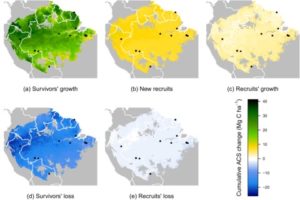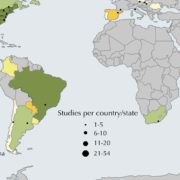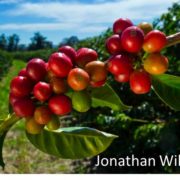Effect of selective logging on recovery of stored carbon in Amazonian forests
 The Amazon rainforest stores 30% of land-based ecosystem carbon. How are carbon stores affected by selective tree removal and subsequent regrowth? Stored carbon continues to be lost for several years after logging due to damage-associated mortality of surviving trees. Piponoit et al. use data from more than one hundred Amazonian forest plots to examine how selective logging affects above-ground carbon stores, particularly its effects on growth and mortality of surviving trees as well as growth of new trees. Not surprisingly, the rate of recovery of stored carbon is influenced by region within the forest, with a faster recovery occurring in regions with milder climates. Furthermore, the authors observe that recruited trees that replace logged trees are often species that are more vulnerable to water stress and therefore offer less long-term resilience than trees that were removed. These observations can inform forest management planning. eLIFE 10.7554/eLife.21394
The Amazon rainforest stores 30% of land-based ecosystem carbon. How are carbon stores affected by selective tree removal and subsequent regrowth? Stored carbon continues to be lost for several years after logging due to damage-associated mortality of surviving trees. Piponoit et al. use data from more than one hundred Amazonian forest plots to examine how selective logging affects above-ground carbon stores, particularly its effects on growth and mortality of surviving trees as well as growth of new trees. Not surprisingly, the rate of recovery of stored carbon is influenced by region within the forest, with a faster recovery occurring in regions with milder climates. Furthermore, the authors observe that recruited trees that replace logged trees are often species that are more vulnerable to water stress and therefore offer less long-term resilience than trees that were removed. These observations can inform forest management planning. eLIFE 10.7554/eLife.21394










Leave a Reply
Want to join the discussion?Feel free to contribute!